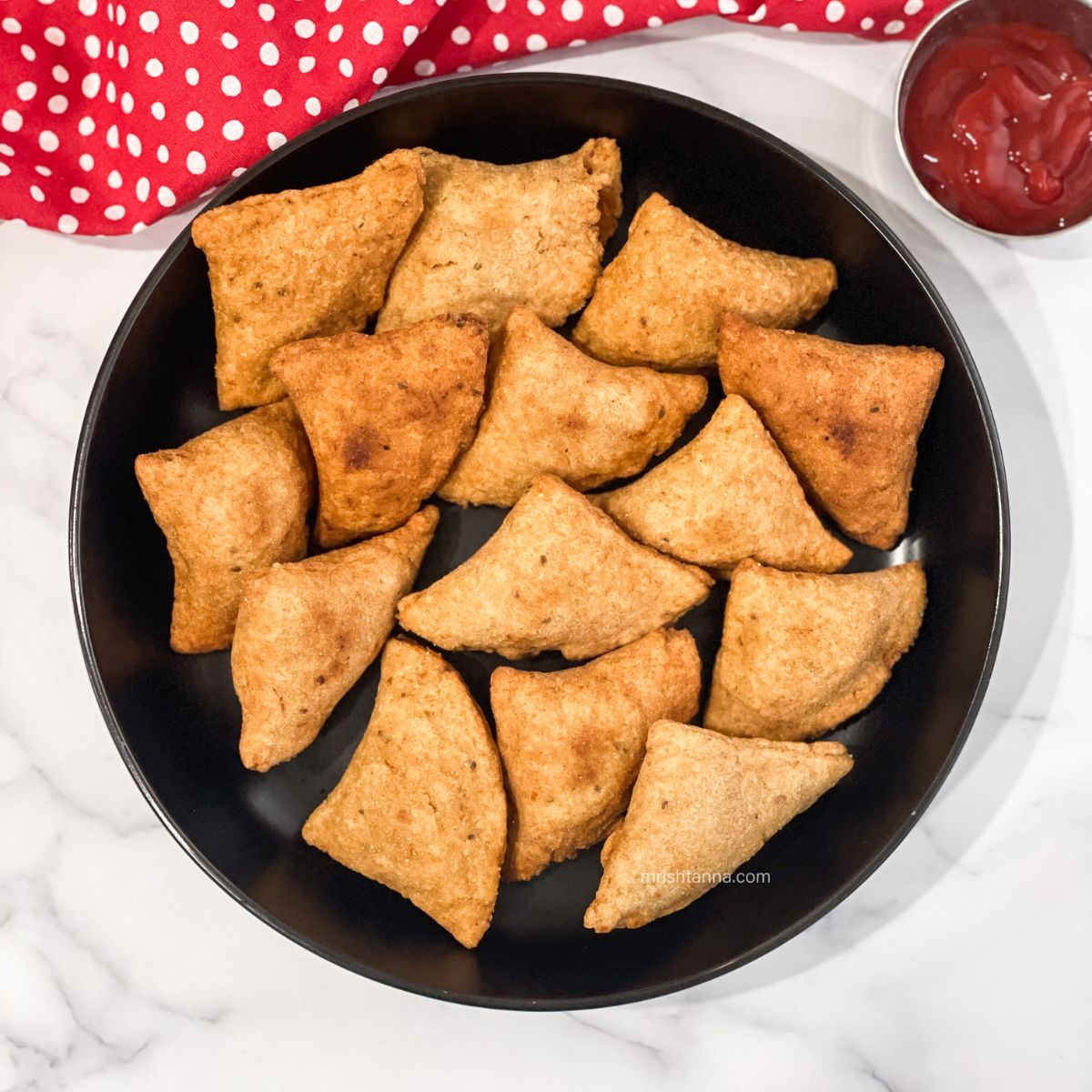Alright, let’s talk about this gluten-free samosa dough mission I put myself on. It wasn’t exactly for kicks and giggles, you know. Someone in the family got hit with the no-gluten rule, and if you know us, samosas are practically a food group. Giving them up? Wasn’t going to happen on my watch. So, yeah, the challenge was set: make a gluten-free samosa dough that didn’t taste like disappointment.

The First Few Disasters
So, first thing I did, like any normal person, was grab a few of those pre-mixed gluten-free flour bags from the supermarket. Thought it would be easy. Wrong. So wrong. For samosas, most of them were just… bad. Honestly, a complete waste of money. Some made a dough that crumbled if you just looked at it too hard. Others turned into this weird, sticky mess that you couldn’t possibly roll out. Forget thin and crispy – I was getting thick and clunky, if it held together at all. My bin saw a lot of failed dough those first few weeks, I tell ya.
I remember thinking, this can’t be it. There has to be a way. People make gluten-free bread, gluten-free cakes, why not a decent samosa pastry?
Diving into the Flour Jungle
That’s when I decided, okay, store-bought blends are out. I gotta make my own mix. And down the rabbit hole I went. Suddenly my kitchen counter looked like a science lab. I had bags and containers of all sorts of stuff:
- White rice flour
- Brown rice flour (thought it might add some… something)
- Tapioca starch – heard this was key for some stretch, or what passes for stretch in gluten-free land
- Potato starch
- Cornstarch
- And besan, you know, chickpea flour. I really hoped this would bring some of that authentic flavor.
Then came the binders. Xanthan gum. Psyllium husk. Guar gum. It was a whole new vocabulary. How much to use? Too little and it falls apart. Too much and it’s gummy. It felt like I was just guessing most of the time. Flour everywhere. My hands constantly covered in different textures of weird, non-wheat dust.
Getting Hands-On: The Actual Dough Making
Mixing this gluten-free stuff is nothing like working with good old wheat flour. You can’t just knead it into submission. There’s no gluten to develop, so all that stretching and folding you do for regular dough? Pointless. You’re basically just trying to get all the flours properly hydrated and combined into something that resembles a dough. The texture I was aiming for was something pliable, not too sticky, not too dry. Easier said than done. Sometimes it felt like I was playing with wet sand, other times like I was wrestling with a sticky monster.

I learned pretty quick that warm water seemed to work better than cold. And adding a bit of oil or melted ghee directly into the dough helped with the texture and made it a tiny bit easier to handle. Small victories, right?
The Rolling and Shaping Saga
Okay, so let’s say I managed to get a dough that felt promising. The next hurdle? Rolling it out. Oh boy. This gluten-free dough, it just loves to tear. Or stick. Or both. I tried rolling it between two sheets of parchment paper – that helped a bit, sometimes. Other times, it just squished out the sides or stuck stubbornly to the paper. You need a light touch, but also you need it thin enough for that crispy samosa shell. It’s a real balancing act.
And then folding them into those classic triangle shapes? Ha! With dough that has zero elasticity and is prone to cracking at the edges? Let’s just say my first few batches of “samosas” looked more like abstract art. Some of them just burst open when I tried to fill them. More frustration. I almost gave up a few times, not gonna lie.
Finding Something That Kinda Worked
After what felt like a million experiments, and a lot of not-so-great samosas, I landed on a combination that was, well, pretty decent. Not perfect, mind you, but decent. It was mostly a blend of white rice flour and tapioca starch – the tapioca really seemed to help with making it less crumbly. I added a little bit of chickpea flour too, for flavor, and some psyllium husk powder dissolved in the warm water. That psyllium seemed to give it a bit more flexibility than just xanthan gum alone. And definitely oil in the dough.
The key was also not to overwork it, and to work relatively quickly once it was rolled. And not to overfill the samosas. That was a big one.

So, The Verdict?
Were these gluten-free samosas exactly like the ones made with maida? Nope. Let’s be honest here, gluten does some magical things that are hard to replicate. But, were they good? Yeah, they actually were. They fried up pretty crispy. They held the filling. And most importantly, they satisfied that deep, primal craving for a samosa. The gluten-intolerant family member was happy. The rest of us? We ate them too, and nobody really complained. And in the world of gluten-free baking, getting something that everyone eats without a fuss? That’s a massive win. So yeah, that was my journey into gluten-free samosa dough. A bit of a pain, but worth it in the end.